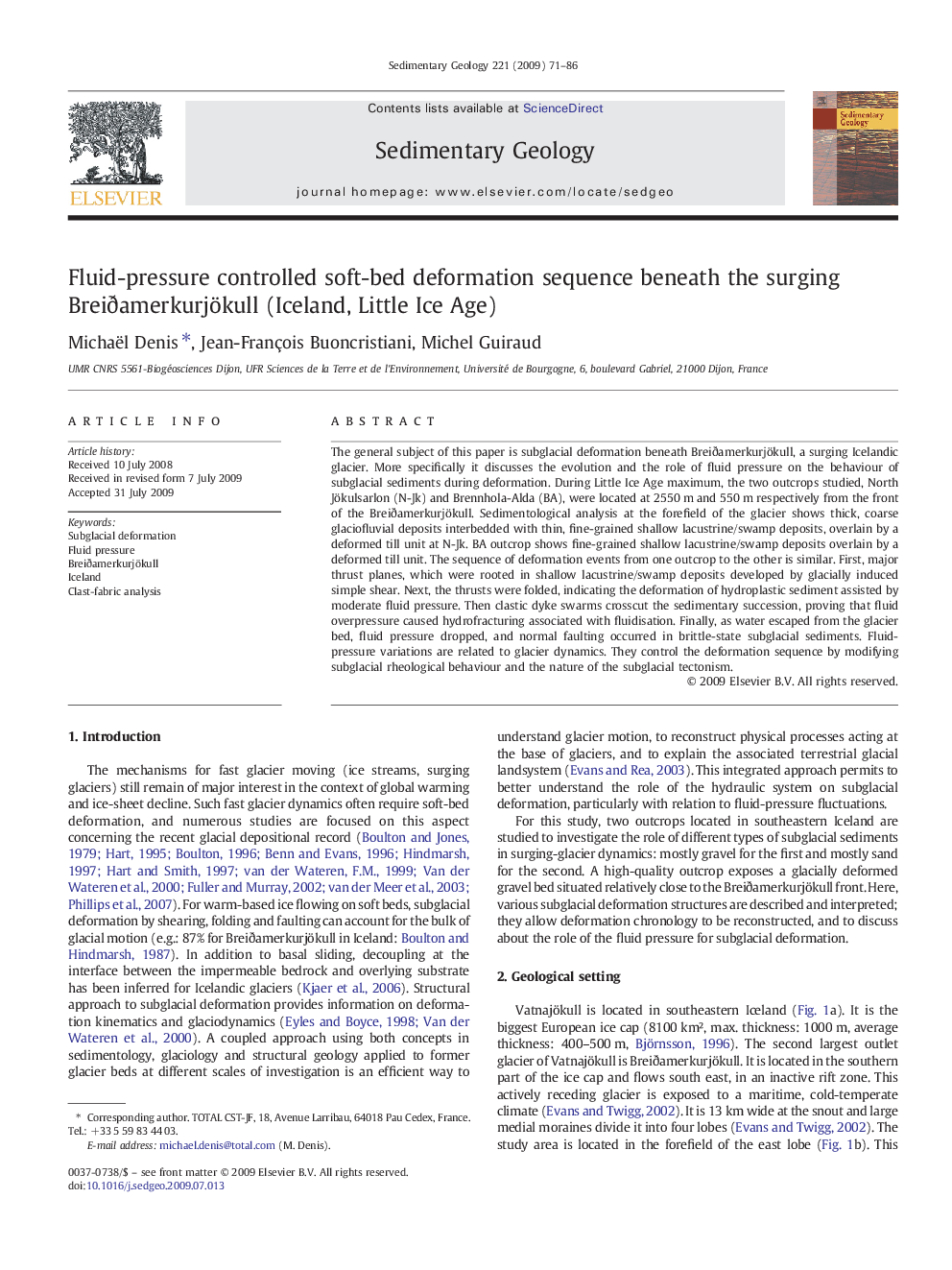| Article ID | Journal | Published Year | Pages | File Type |
|---|---|---|---|---|
| 4690361 | Sedimentary Geology | 2009 | 16 Pages |
Abstract
The general subject of this paper is subglacial deformation beneath Breiðamerkurjökull, a surging Icelandic glacier. More specifically it discusses the evolution and the role of fluid pressure on the behaviour of subglacial sediments during deformation. During Little Ice Age maximum, the two outcrops studied, North Jökulsarlon (N-Jk) and Brennhola-Alda (BA), were located at 2550 m and 550 m respectively from the front of the Breiðamerkurjökull. Sedimentological analysis at the forefield of the glacier shows thick, coarse glaciofluvial deposits interbedded with thin, fine-grained shallow lacustrine/swamp deposits, overlain by a deformed till unit at N-Jk. BA outcrop shows fine-grained shallow lacustrine/swamp deposits overlain by a deformed till unit. The sequence of deformation events from one outcrop to the other is similar. First, major thrust planes, which were rooted in shallow lacustrine/swamp deposits developed by glacially induced simple shear. Next, the thrusts were folded, indicating the deformation of hydroplastic sediment assisted by moderate fluid pressure. Then clastic dyke swarms crosscut the sedimentary succession, proving that fluid overpressure caused hydrofracturing associated with fluidisation. Finally, as water escaped from the glacier bed, fluid pressure dropped, and normal faulting occurred in brittle-state subglacial sediments. Fluid-pressure variations are related to glacier dynamics. They control the deformation sequence by modifying subglacial rheological behaviour and the nature of the subglacial tectonism.
Related Topics
Physical Sciences and Engineering
Earth and Planetary Sciences
Earth-Surface Processes
Authors
Michaël Denis, Jean-François Buoncristiani, Michel Guiraud,
